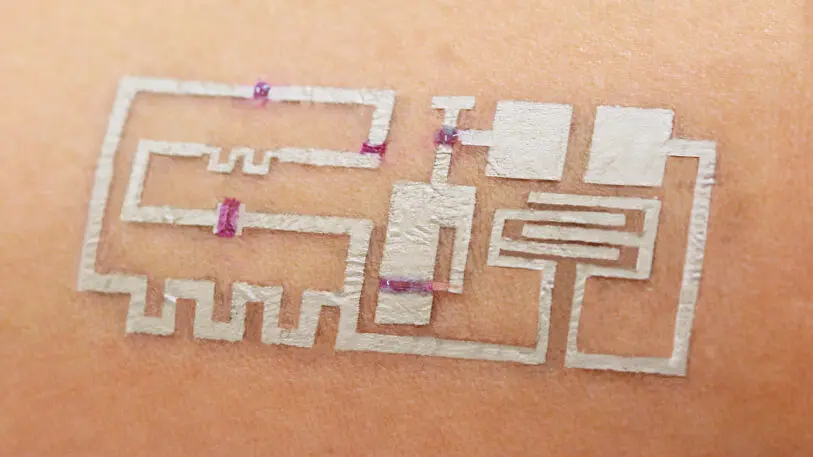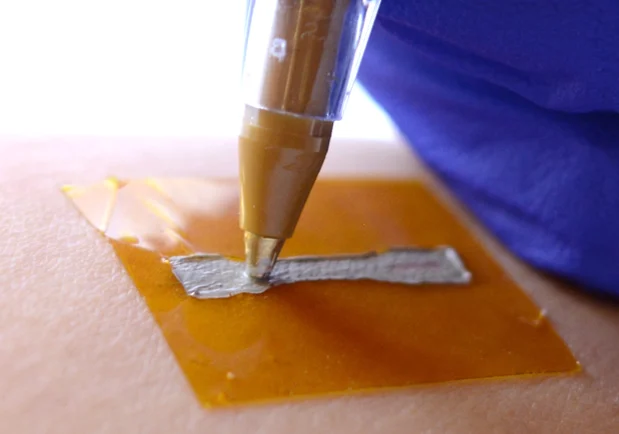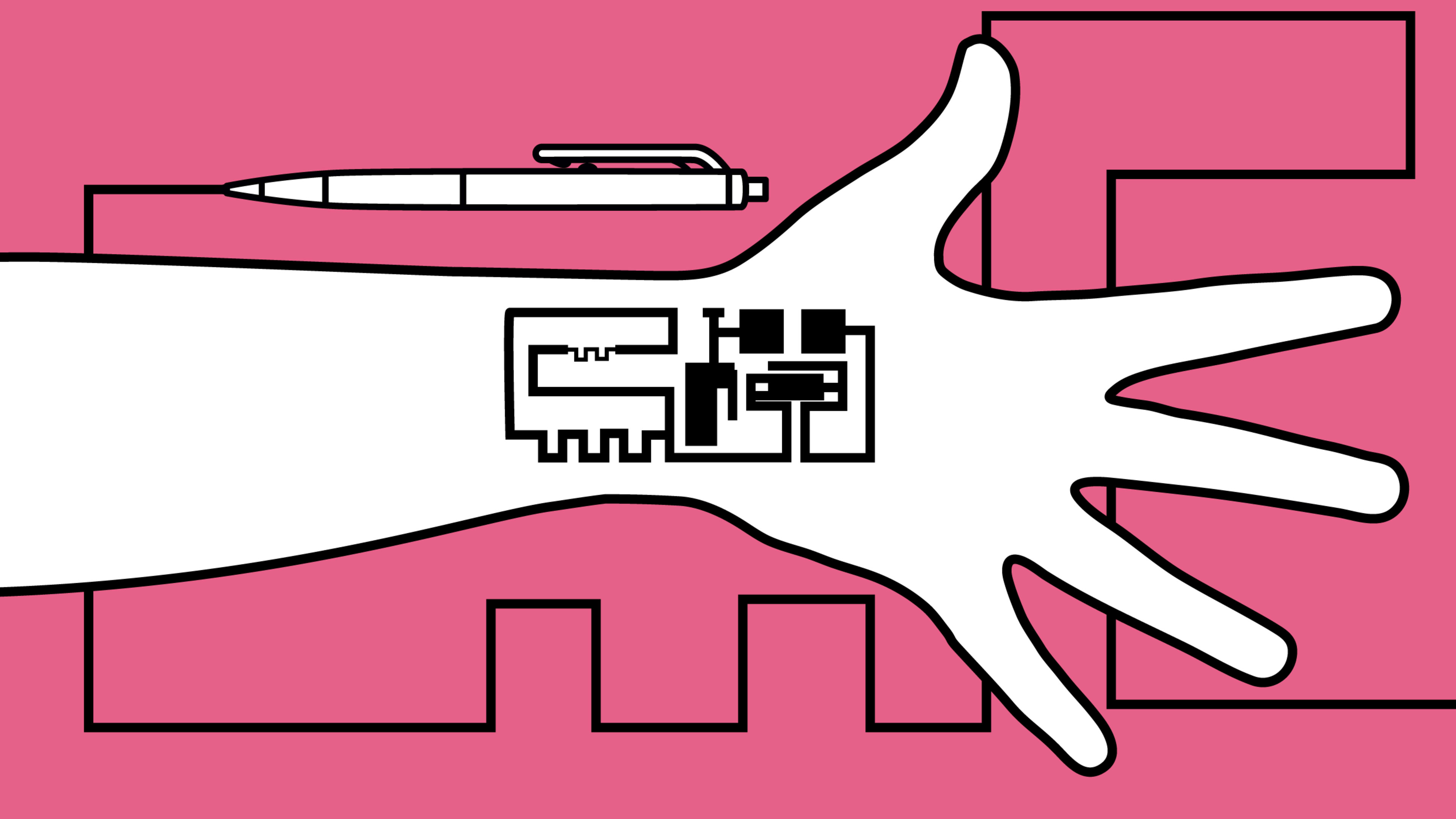Sensors placed on your skin are powerful tools for doctors. They can measure your temperature, hydration, heartbeat, and muscle strain. The problem is that their hardware can be bulky, invasive, and expensive. Wearing an EKG tracker can feel like mummifying your body in wires.
But a new technology out of the University of Houston, led by Associate Professor Cunjiang Yu, solves all of these problems. His team has developed “drawn-on-skin” electronics. Quite literally, they have demonstrated that you can take a ballpoint pen, fill it with a special semiconductor ink containing elements like silver, and draw specific diagnostic sensors right on your body. These sensors get their energy from a nearby wireless battery pack, and send/receive data via Bluetooth.

First and foremost, applying this advanced technology is decidedly low-tech. Heck, it’s easier than using a Spirograph. To apply, the stencil is taped onto the skin. The doctor (or even a patient) traces its line with a ballpoint pen filled with special ink. And after five minutes of drying time, the ink adheres to the skin and the stencil is removed.

As Yu explains, the breakthrough here is not just the ink (which could be formulated in all sorts of ways, he argues), but the entire interface of application, which needs neither expertise, nor a clean room to apply. So Yu imagines that you could get a special pen and stencil shipped to your home to draw on yourself, or you could get a quick sketch placed on your arm at the gym to measure vitals while exercising. Obviously, it’s a technology that would be comfortable in the developing world, too, where doctors and specialized equipment can be scarce. The cost? “Let’s say a dollar,” Yu laughs, before clarifying—maybe it would cost a few dollars for advanced circuits. In any case, the product is extremely cheap to manufacture.
But can these sensors do anything all that useful? Indeed, they can. We’ve seen that constantly monitoring someone’s temperature can spot COVID-19 outbreaks early, and Yu has proven that, when applied to wounds, his system can send out electrical impulses that speed up the healing process. Muscle strain monitors can be used to track someone’s gait and analyze their physiology for training or rehabilitation. And the medical industry is increasingly recognizing hydration monitoring as an important tool, especially for the elderly in hospitals, as up to 17% of elderly people admitted for dehydration will die in care. In any case, draw-on electronics offer the capability of advanced wearable electronics with the promise of lower costs and greater customization. Ink-based electronics, drawn by your own hand on your own body, are the definition of democratized technology.
Since publishing the research last week, Yu has already received calls from several parties interested in licensing the technology and codeveloping it further. Hopefully, it can come to market soon, and stays affordable in the process.
Recognize your brand’s excellence by applying to this year’s Brands That Matter Awards before the early-rate deadline, May 3.
